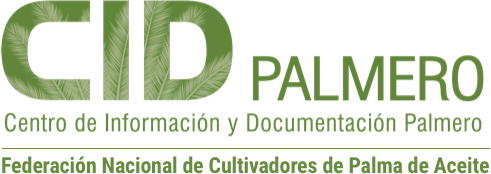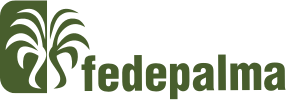Prospect of crops and livestock integration in oil palm on peat soil.

Author
Seminar on elevating National Oil Palm Productivity and Recent Progress in the Management of Peat and Ganoderma
May 5-6, 2002 :
Bangi, Selangor, Malaysia :
40260.
Roslan, Arshad
46855.
Rosli, Awaludin
42164.
Suboh, Ismail
41294.
Estadisticas
Abstract
The rapid development of the oil palm cultivation since the 1980's and the government's policy towards greater industrialization resulted in the rapid depletion of suitable agriculture land. Further expansion in oil palm planting and or other agriculture development would have to utilize less fertile or marginal lands. Through intensive research carried out by various agencies, significant progress have been achieved in converting these soils, especially peat soil profitable for agriculture. Besides, concerted efforts are given to in crease the productivity of oil palm production on this soil, maximization of land utilization should be adopted to obtain maximum in come. Maximization of land use through integration of crops or livestock is possible since adequate sunlight can penetrate through the oil palm canopy enabling other crops to be grown including forages for the livestock. Various cash crops have been identified that are suitable for planting on peat soil. Some of these crops are potentially viable and can be grown in the oil palm interrows especially during the first three years after planting. However, some adjustments have to be made to the planting system of the crops so that the growth of the oil palm as the main crop will not be affected. In addition the crops should be marketable and suit to the labour availability. Pineapple, papaya, sweet potato, cocoyam and banana are good examples of crops which can generate income from RM1,511.50 to RM24,212.00/ha/season or RM116.30 lo RM1,008.00/ha/month when integrated with oil palm Integration of free-range chicken, sheep and meat goat are currently under study and appear to have the potential for commercial production on peat soil. Incluye 15 referencias bibliográficas. The rapid development of the oil palm cultivation since the 1980's and the government's policy towards greater industrialization resulted in the rapid depletion of suitable agriculture land. Further expansion in oil palm planting and or other agriculture development would have to utilize less fertile or marginal lands. Through intensive research carried out by various agencies, significant progress have been achieved in converting these soils, especially peat soil profitable for agriculture. Besides, concerted efforts are given to in crease the productivity of oil palm production on this soil, maximization of land utilization should be adopted to obtain maximum in come. Maximization of land use through integration of crops or livestock is possible since adequate sunlight can penetrate through the oil palm canopy enabling other crops to be grown including forages for the livestock. Various cash crops have been identified that are suitable for planting on peat soil. Some of these crops are potentially viable and can be grown in the oil palm interrows especially during the first three years after planting. However, some adjustments have to be made to the planting system of the crops so that the growth of the oil palm as the main crop will not be affected. In addition the crops should be marketable and suit to the labour availability. Pineapple, papaya, sweet potato, cocoyam and banana are good examples of crops which can generate income from RM1,511.50 to RM24,212.00/ha/season or RM116.30 lo RM1,008.00/ha/month when integrated with oil palm Integration of free-range chicken, sheep and meat goat are currently under study and appear to have the potential for commercial production on peat soil.
The rapid development of the oil palm cultivation since the 1980's and the government's policy towards greater industrialization resulted in the rapid depletion of suitable agriculture land. Further expansion in oil palm planting and or other agriculture development would have to utilize less fertile or marginal lands. Through intensive research carried out by various agencies, significant progress have been achieved in converting these soils, especially peat soil profitable for agriculture. Besides, concerted efforts are given to in crease the productivity of oil palm production on this soil, maximization of land utilization should be adopted to obtain maximum in come. Maximization of land use through integration of crops or livestock is possible since adequate sunlight can penetrate through the oil palm canopy enabling other crops to be grown including forages for the livestock. Various cash crops have been identified that are suitable for planting on peat soil. Some of these crops are potentially viable and can be grown in the oil palm interrows especially during the first three years after planting. However, some adjustments have to be made to the planting system of the crops so that the growth of the oil palm as the main crop will not be affected. In addition the crops should be marketable and suit to the labour availability. Pineapple, papaya, sweet potato, cocoyam and banana are good examples of crops which can generate income from RM1,511.50 to RM24,212.00/ha/season or RM116.30 lo RM1,008.00/ha/month when integrated with oil palm Integration of free-range chicken, sheep and meat goat are currently under study and appear to have the potential for commercial production on peat soil.
Palabras clave:
Banano.
Control de malezas
Cultivo intercalado.
cultivos tubérculo
Explotación agrícola combinada.
Ganado.
Medio ambiente.
Papayas.
Pina.
Productividad.
Rendimiento.
Sistemas agropascícolas.
Suelo de turba
Palma de aceite
Banano.
Control de malezas
Cultivo intercalado.
cultivos tubérculo
Explotación agrícola combinada.
Ganado.
Medio ambiente.
Papayas.
Pina.
Productividad.
Rendimiento.
Sistemas agropascícolas.
Suelo de turba
Palma de aceite


